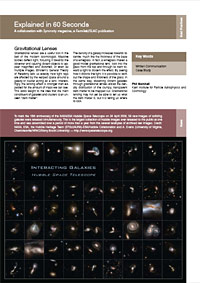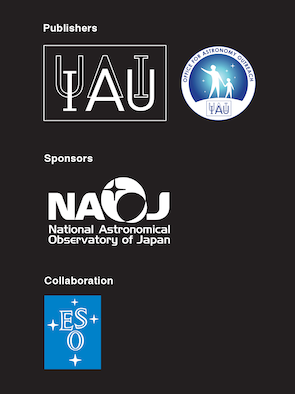
Download this article
- PDF (89 KB)
Back to the Table of Contents
|
Gravitational Lenses (page 4)
Phil Marshall
Gravitational lenses are a useful tool in the belt of the modern cosmologist. Massive bodies deflect light, focusing it towards the observer and causing distant objects to appear
magnified and distorted, or even as multiple images. Einstein’s General Theory of Relativity tells us exactly how light rays are affected by the warped space around a galaxy or cluster acting as a lens. Interestingly, the lensing effect is stronger than expected for the amount of mass we can see. This adds weight to the idea that the main constituent of galaxies and clusters is an unseen “dark matter”.
The density of a galaxy increases towards its centre, much like the thickness of the base of a wineglass. In fact, a wineglass makes a good model gravitational lens: look into the
glass from the top and through its stem toward a light to discern the effect. By seeing how it distorts the light, it is possible to work out the shape and thickness of the glass. In the same way, observing distant galaxies through gravitational lenses allows the density distribution of the clumpy, transparent dark matter to be mapped out. Gravitational lensing may not yet be able to tell us what the dark matter is, but it is telling us where to look.
|

